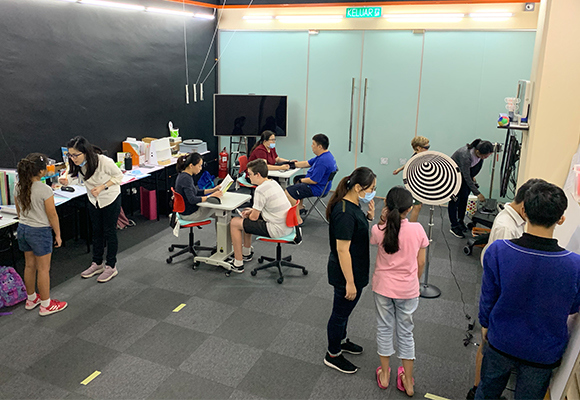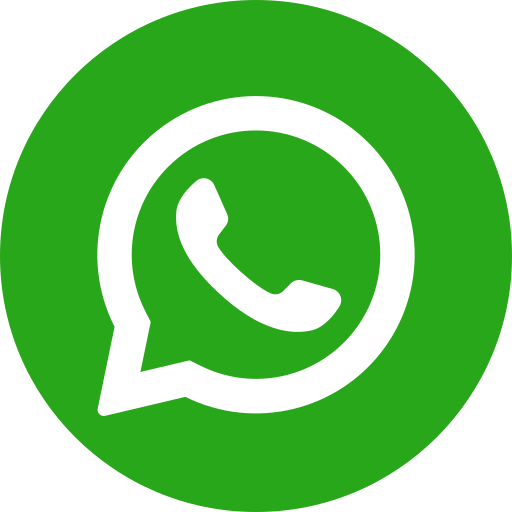Neuro-Vision Therapy Treatment
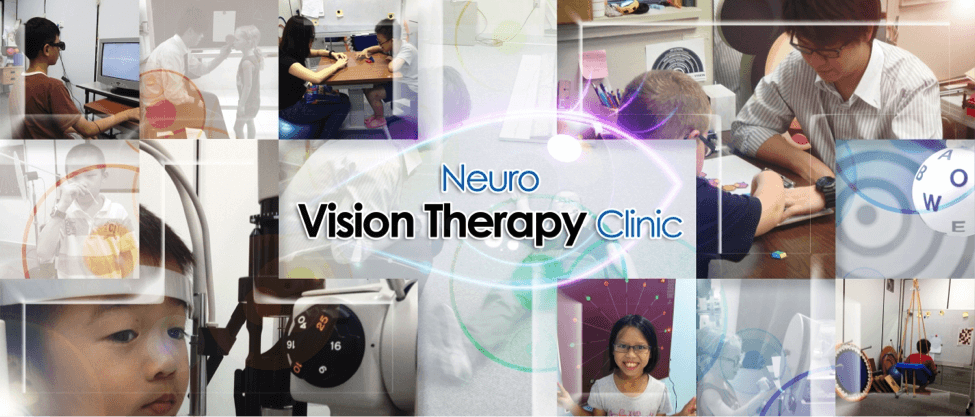
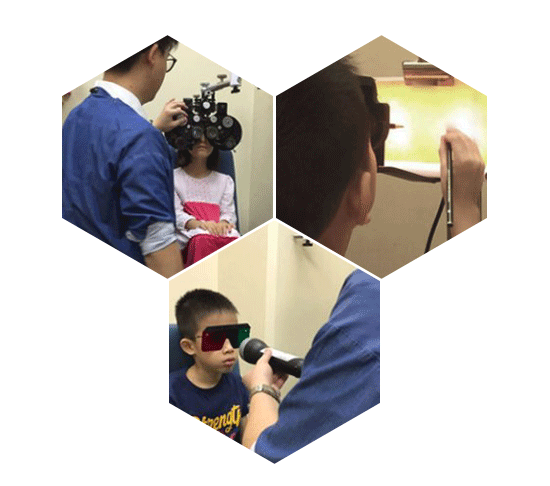
What Do We Do
Our office specializes in the diagnosis and solution of vision disorders that interfere with reading, learning and other activities of daily living. While we also work with adults, we mainly see children in our office. Children love our staff. They create a very warm caring atmosphere during the testing(Neuro-Vision Therapy).
To prepare your child for the evaluation, be sure to explain that there will be no shots and that there are no wrong answers. It is also helpful if you can make sure your child has a good night's sleep and eats a meal with protein and vegetables (if possible) prior to the appointment.
The evaluation takes about 1 ½ hrs and is very thorough. After the evaluation a separate appointment is scheduled where, the Neuro-Developmental optometrist, will speak with both parents to get a better understanding of how the vision problem is impacting your child’s life. He then combines your information with the results of the testing to design a unique therapy plan to ensure your child’s success.
The first step of a Neuro-vision treatment program is a thorough examination with to determine if Neuro-vision treatment is the best course of care. Having had extensive experience training patients of all ages, he easily makes his younger patients comfortable during this exam.
Neuro-Vision Treatment is carefully monitored by a Board Certified Neuro-Developmental & Behavioral optometrist like not the same as "Vision Therapy" by others, and is supported by the American Optometric Association as a clinical treatment for certain visual deficits.
Neuro-Vision Therapy Is Not Or Is More Than...
1. The Bates Method - Self-Directed Vision Improvement Invented in the 1920s The Bates Method is NOT to be confused with Vision Therapy. The Bates Method was invented by W.H. Bates, an ophthalmologist who wrote Perfect Sight Without Glasses in 1920! Optometric Vision Therapy, on the other hand, has continued to evolve into the 21st century with new research, treatment technologies, and cross-disciplinary work with medical professionals, such as neurologists, occupational therapists, audiologists, etc.
2. The National Eye Institute, National Institutes of Health has published new research on the Successful Treatment of Lazy Eye (Amblyopia) in Older Children and Treatment of Convergence Insufficiency. Research on neuroplasticity by neuroscientists also shows that the brain is capable of much greater change in adulthood than was previously thought possible.
3. Self-Help Eye Exercises with Pencil Push-ups, Kits, or Computer Programs Self-help eye exercise programs such as the now defunct See Clearly Method or the Vision for Life program are NOT to be confused with Vision Therapy. Vision Treatment involves therapeutic procedures supervised by an Neuro-Developmental & Behavioral optometrist or vision therapist as well as the use of medically regulated devices, such as lenses and prisms. Self-directed eye exercise programs are not an adequate substitute for professional evaluation and solution of binocular vision conditions, such as Amblyopia (Lazy Eye), Strabismus (Congenital Esotropia, Intermittent Exotropia, Hypertropia, etc.), Anisometropia or Convergence Insufficiency Disorder.
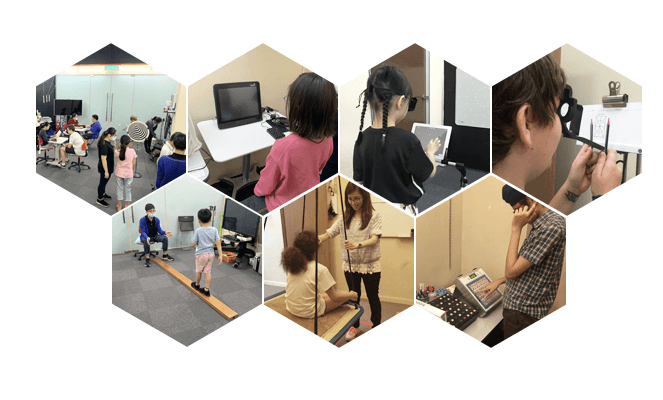
Neuro-Vision Therapy Is Not Orthoptics Alone
Neuro-Vision therapy programs include orthoptics, but, technically there are broad distinctions between Vision Therapy and orthoptics. Orthoptics is the medical term for eye muscle training procedures, provided by orthoptists and/or optometrists, which address eye teaming and visual clarity (acuity) only. Technically, there are broad distinctions between Orthoptics and Neuro-Vision Therapy (which includes Orthoptics).
Orthoptics regards strabimus as an eye muscle problem and train is directed toward muscle strength.
Behavioral & Neuro-Developmental Optometrists who provide Neuro-Vision Therapy look at the neurological control system of the eyes and thus train the whole visual system(and whole person). Neuro-Vision Treatment alters the entire nervous system and reflexive behavior, thus resulting in a lasting cure. In general, orthoptics is home-based therapy. In general, Neuro-Therapy is performed under supervision in a Board Certified Behavioral & Neuro-developmental optometrists in office and home therapy is an adjunct. Recent scientific research has shown that office-based Vision Treatment with homework is more successful than home-based therapy alone.
Research
Optometric Neuro-Vision Therapy has helped many children who were struggling academically, individuals with eye turns and those with traumatic brain injuries. Vision Treatment will continue to change lives thanks to the research conducted by dedicated individuals within this specialized field. We have composed a list of research links for you:-
Frequently Asked Questions
As Neuro-Vision Therapy is not a protected title in Asia, it can be confused with others non-optometric centers offering Vision Therapy or Myopia control Vision Therapy. Our office Neuro-Vision Treatment is certified by International Board with a Title of FCSO,FNORA, FCOVD & FACBO.
Fellow of College of Syntonic Light Therapy,FCSO
Fellow of Neuro Optometric Rehabilitation Association,FNORA
Fellow of The Australasian College of Behavioural Optometrist ,FACBO
Fellow of The College of Optometrists in Vision Development, FCOVD
Depending on the type of problem found sometimes glasses can help. If glasses won't solve the vision problem then Neuro-vision treatment is needed.
Neuro-Vision therapy is much like “physical therapy”, but rather than training the muscles of the body, it works on the eyes and visual system. It is an invaluable tool that has changed not only our patients’ vision, but has improved many related areas of their lives as well.
The first step of a Neuro-vision treatment program is a thorough examination with Mr. Stanley to determine if Neuro-vision treatment is the best course of care. Having had extensive experience training patients of all ages, he easily makes his younger patients comfortable during this exam.
Next, he'll prescribe an individualized program of Neuro-vision therapy that train your eyes to work together, track, perceive and focus properly. Strengthening these basic visual skills can really change the way you see, allowing you to enjoy activities, such as reading, that may have been difficult before.
Research has shown that Neuro-vision treatment can be instrumental in helping increase visual attention spans for children learning to read. Often, children who had been falling behind in reading are able to improve their performance greatly by reducing the effects of their vision problems. Neuro-Vision therapy truly allows kids to enjoy learning and become more confident, happier people.
Just as a physical therapist might use treadmills or weights, a vision therapist uses hi-tech equipment including prisms, eye patches, filtered lenses, computerized systems as well as a variety of other specialized equipment to conduct Neuro-vision treatment sessions. In our office, we use many interactive computer programs that our younger patients enjoy and that result in long-lasting success.
Not only do the programs offer a proven, more effective method of delivering therapy, but the "fun" nature of the programs keeps children motivated to work, and thus, we find that results come quicker and stronger for our patients.
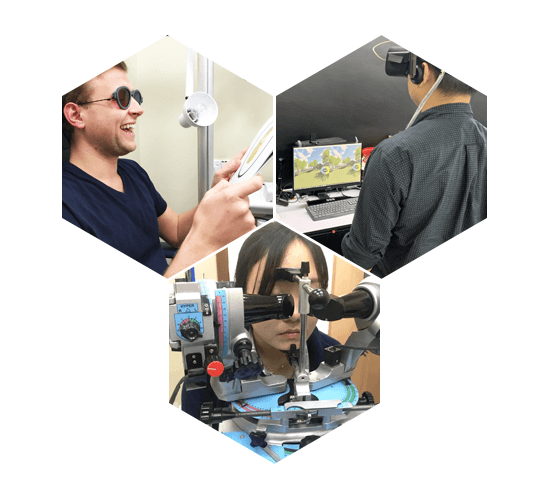
The number of office visits required depends on the diagnosis and the age of the patient. Neuro-Vision therapy programs typically involve one to two in-office sessions throughout the week, for a varying number of months depending on need. We usually prescribe home exercises to reinforce office therapy.
There are a number of programs of "eye exercises" and techniques for improving vision that are not associated with Neuro-Vision Therapy, such as colored lenses or other programs advertised to quickly improve eyesight.Visual therapy is a way to enhance visual development and strength.
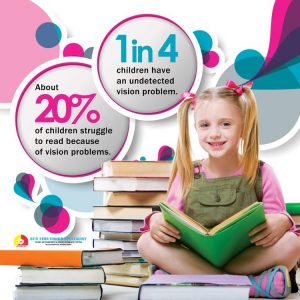
Orthoptics means to straighten the eye with exercises. Depending on the diagnosis, sometimes the Neuro-therapy program will include orthoptics. However, there is much more to Neuro-vision therapy than just orthoptics, for example it Neuro-vision therapy includes:
- Pursuit and saccade therapy (to improve the speed and accuracy of eye movements)
- Visual-vestibular therapy (to integrate eye movements with balance)
- Visual perceptual therapy (to enhance visual information processing)
- Eye-hand coordination therapy (to develop visually guided movement)
- Accommodative therapy (to enhance focusing stability, flexibility, and comfort)
- Visual attention therapy
- Peripheral awareness therapy (enhances the use of vision as a simultaneous sense, synchronously receiving and processing multiple inputs)
- Visual-spatial awareness including laterality, directionality, and visual imagery
- Visual-auditory integration
- Orthoptics (mechanics of eye movements)
Neuro-Vision Treatment is carefully monitored by a Board Certified Neuro-Developmental & Behavioral optometrist not the same as "Vision Therapy" by others, and is supported by the American Optometric Association as a clinical treatment for certain visual deficits.

